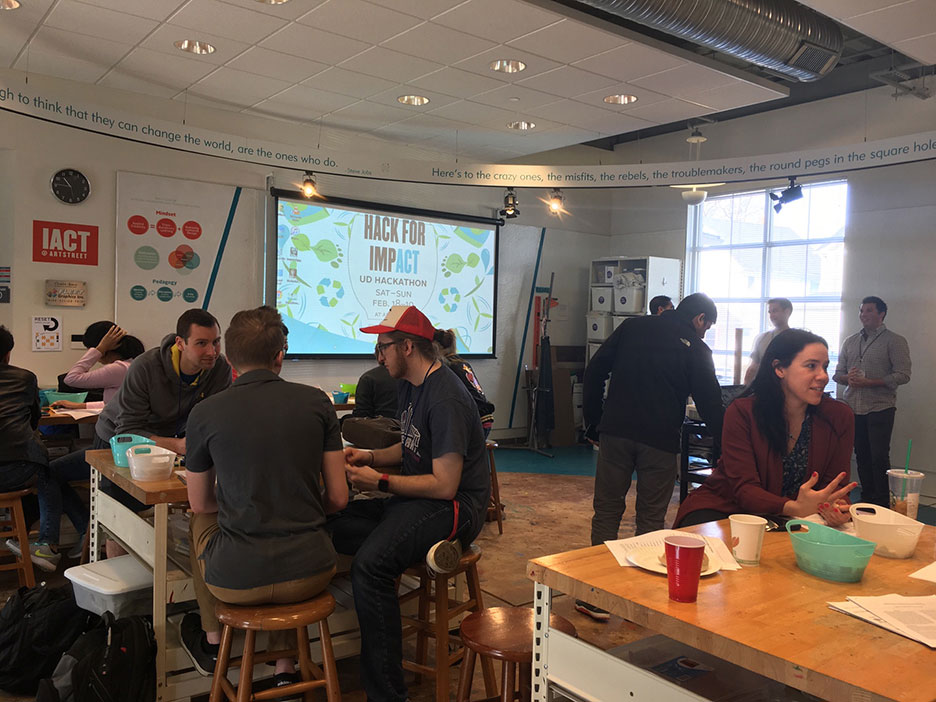Hacking for purpose
Fifteen students took part in the University’s first hackathon on Feb. 18-19 to work across disciplines to help find solutions to local sustainability issues.
These students assembled at ArtStreet to compete in the design competition called Hack for Impact. The event was hosted by the Institute of Applied Creativity for Transformation (IACT), Hanley Sustainability Institute, KEEN/Visioneering Center, Learning Teaching Center and a team of cooperative partners.

Open to all, students in computer information systems, economics and engineering were just some of the majors who were represented in the competition.
Typically, a hackathon is an event that lasts several days where individuals meet to engage in collaborative computer programming.
Participants began with idea building and a rapid prototyping session involving Lego pieces, then expanded their equipment from Legos to laptops as the weekend went on.
“The mission of this hackathon is to bring a diverse group of students together outside the classroom to solve sustainability issues in the local community,” said Mike Puckett, program coordinator of IACT. “As students, you can develop project management skills, creativity, presentation skills and leadership.”
Unlike other hackathons, Hack for Impact relied on the creative design process rather than pure technological skill.
Participants could select any of the four challenges to address: urban youth impact through sustainability, connection and creation of local green businesses, solution for the food desert problem in Dayton and establishing a city-wide solar network in Dayton.
First-year student Tyler Berkshire participated, and his team won an award for best technical solution for their website Situalis. The website connects local businesses by offering a medium where they can sell goods that are approaching expiration for a fraction of the price. Or, the unused raw materials can be sent to a compost facility. This is an attempt to help connect businesses and solve the food desert problem in Dayton.
“I’ve gained information about the setup it takes to solve a problem,” said Berkshire, a computer science major. “It’s a different way of thinking about problem solving, since you’re starting from the very beginning.”
A second award for best social solution went to students Smit Mistry, Ashley Brown and Samantha Rennu. Their team created a mentoring program called Fridays for the Future that helps high school students prepare for life after graduation by talking with professionals about their careers.